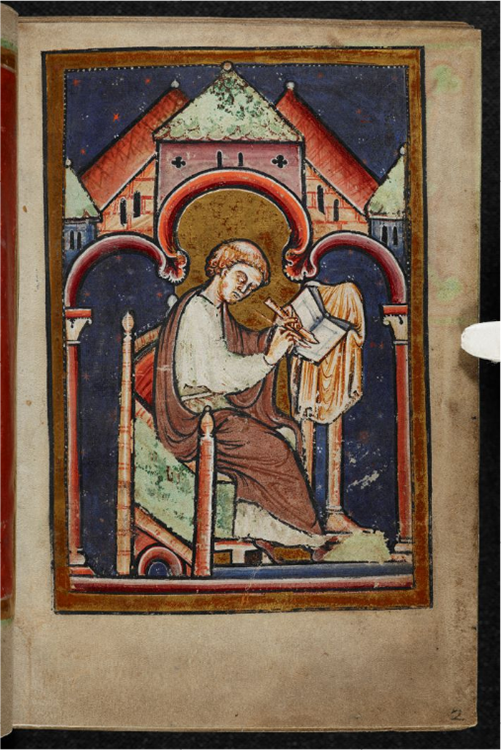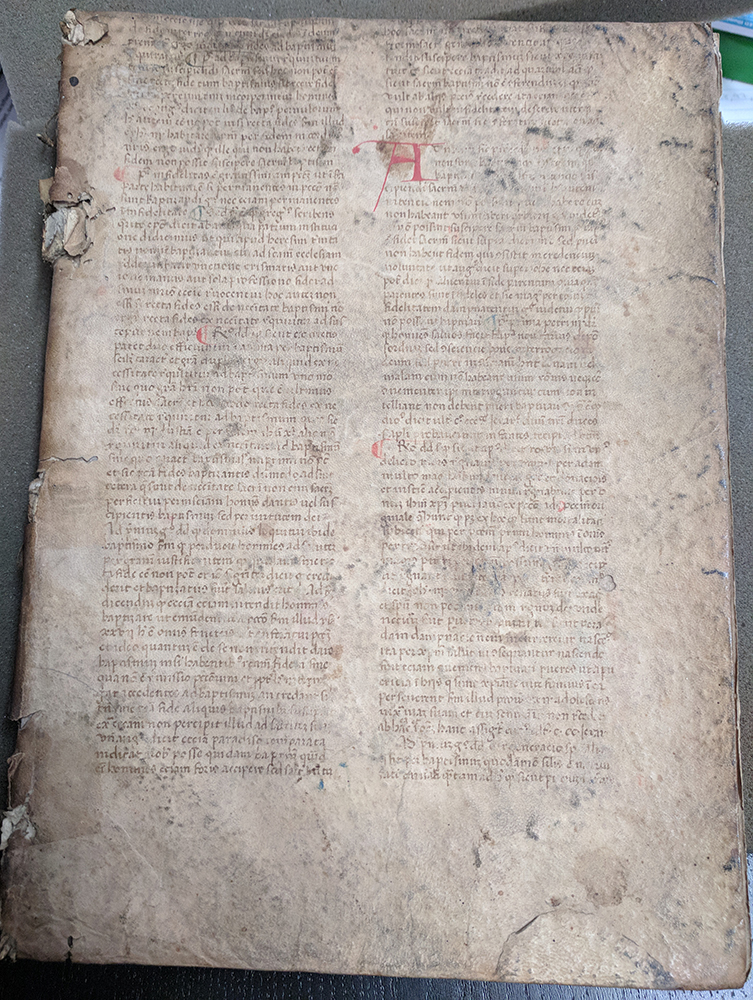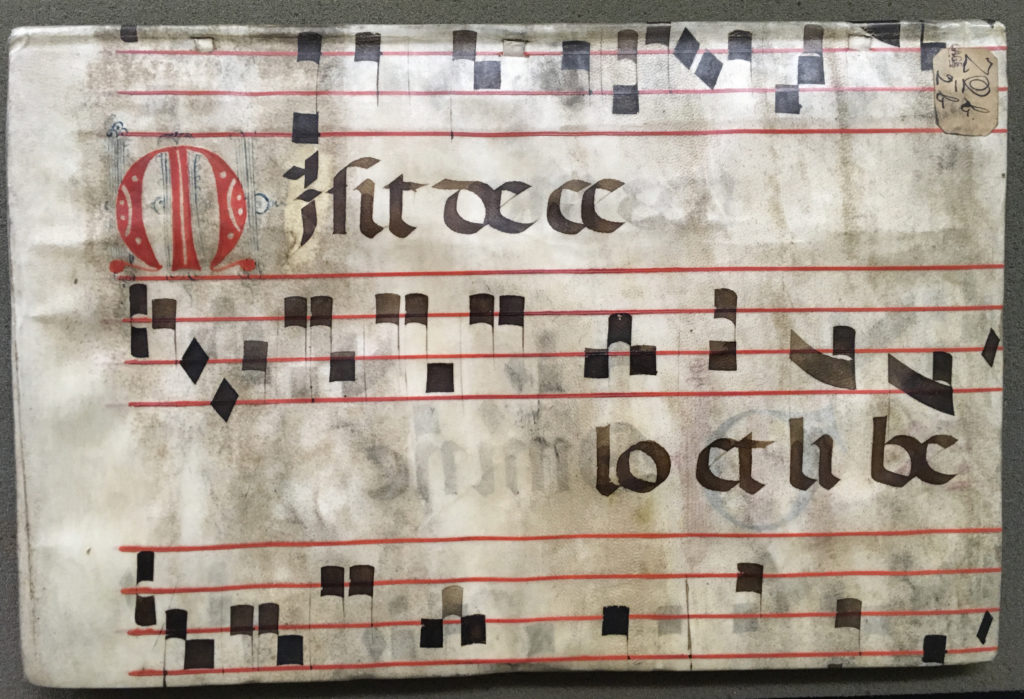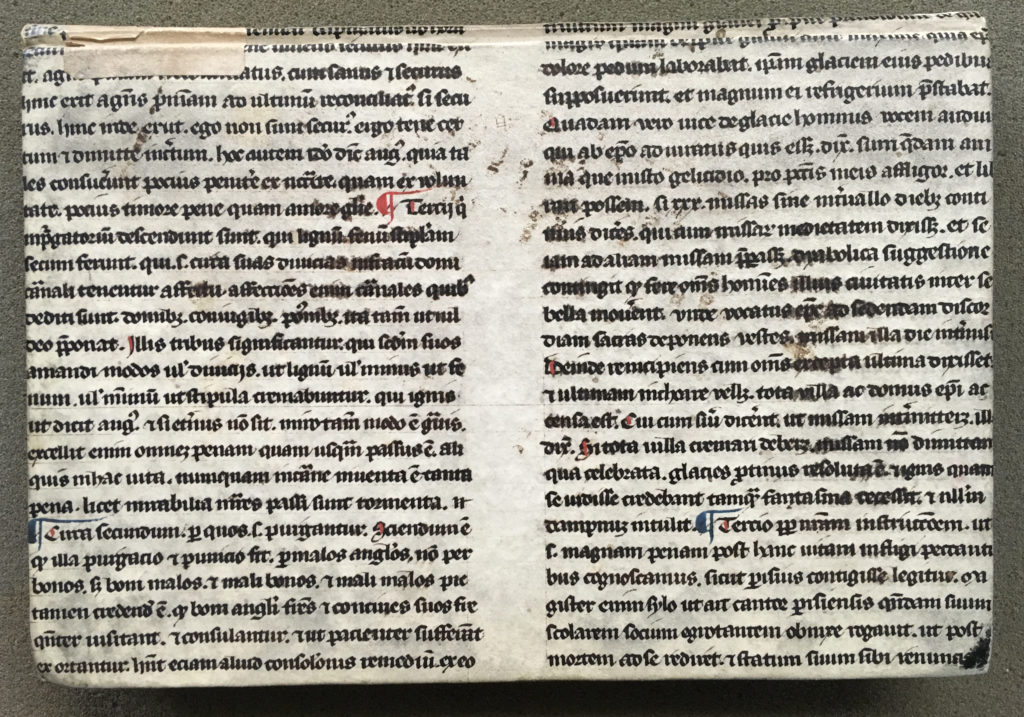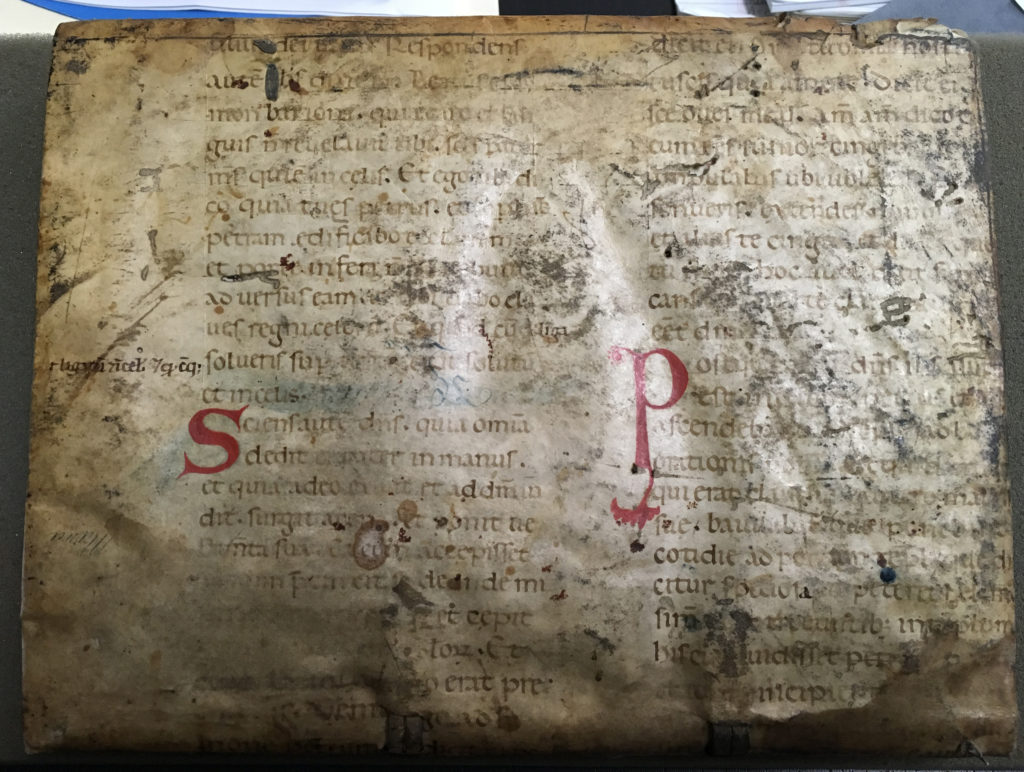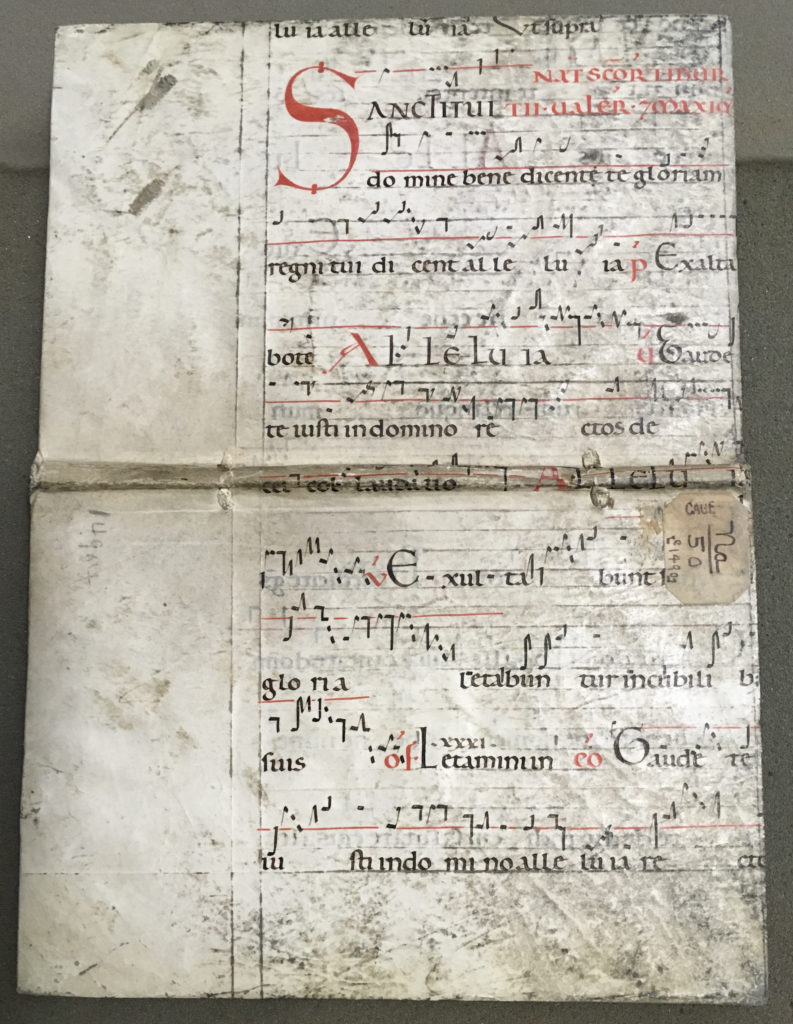Over the past 11 months, we have examined the College’s collection of all things medieval: manuscripts, incunabula bound in manuscript waste, and uncatalogued documents. Features of our medieval materials that I’ve written about include catchwords, ink (here and here), illuminations (here, here, and here), scripts (here, here, here, and here), and parchment. But what’s the point? Why study these books, leaves, and documents that are over 500 years old?
